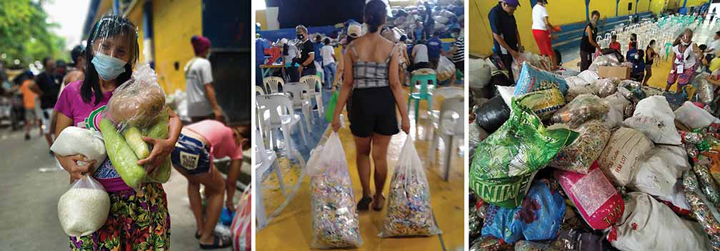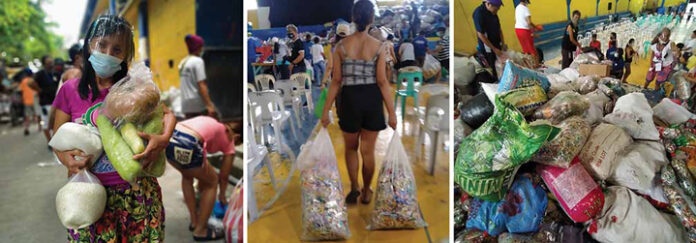
THE magnitude of the shock brought by the pandemic on the Philippine economy may lead to “hysteresis” characterized by long-term adverse effects on formal employment in the country, according to the Asian Development Bank (ADB).
In its Asian Development Outlook (ADO) 2021, ADB downgraded its forecast for Philippine GDP to a “floor” of 4.5 percent this year, significantly lower than the 6.5 percent it projected for 2021 last year. In 2022, the economy is forecasted to grow 5.5 percent.
Prior to the pandemic, the last time the economy posted a growth of below 6 percent was in 2011 when GDP growth averaged 3.9 percent. The ADB projections are also below government’s growth expectations.
“What we’re concerned about is this pandemic [could] have a much longer-lasting negative impact, particularly on formal employment,” ADB Philippines Country Director Kelly Bird said in a presentation on Wednesday.
“Formal employment, [consists of] more regular employment [that offers]far higher salaries. Workers in formal employment have access to skills training etc.; they [formal sector jobs] are the desirable quality jobs. So we are concerned about a shift in the composition of jobs in the medium term,” he explained.
The report noted that 1.7 million wage and salary jobs in private establishments and government were wiped out in the 12 months to January 2021.
Bird noted that based on the latest data, some 435,000 Filipinos shifted to informal jobs from formal employment due to the lockdowns.
He noted that while there was a strong rebound in employment after the Enhanced Community Quarantine (ECQ) was lifted, employment data has not recovered to 2019 levels.
Further, working hours also declined to 39.3 hours per week from 41.3 hours per week. This, Bird said, eventually led to “compressed earnings” in the informal sector.
“Job losses can lead to hysteresis through skill erosion. [The lockdowns disrupted] schooling, on-the-job training, and [caused] longer periods of unemployment for job seekers [which] leads to lost skills—they [workers] become less employable—and lowers potential supply [of workers for] the economy,” Bird said in a presentation.
Changing nature of work
HE said there was “massive sectoral employment reallocation” to sectors that were not heavily dependent on personal contact during the lockdown.
Jobs linked to information and communication saw the highest increase in employment followed by administration support services, agriculture and construction.
However, there was a decline in the jobs linked to services, public administration, other industries, transport and storage, manufacturing, and—the steepest decline—accommodation.
“With this massive sectoral reallocation, we expected to see therefore in the medium term, an increase in skills mismatches in the labor market as workers do not transition easily between sectors because of differences in skills and experiences. So we might expect to see lower rates of employment and higher rates of unemployment,” Bird explained.
The pandemic, Bird said, will have a significant impact on the nature of work because of digital transformation, remote or work from home arrangements, and accelerate automation.
He said this would require workers to have higher skills, particularly in information and communication. The automation will significantly affect jobs in the manufacturing and services sectors.
“We know this [automation] has been a long-term trend but this pandemic may also accelerate efforts to automate. It could also accelerate consolidation of regional production hubs as well,” Bird said.
Best practices
IN order to cope with these changes, some best practices recommended by the ADB include targeted wage subsidies, hiring subsidies, and social employment insurance.
Targeted wage subsidies, Bird explained, keeps employees connected to employers during recessions and the early stages of recovery. Such subsidies, Bird said, were successful in the Philippines.
These wage subsidies could later on be transformed into hiring subsidies that will encourage firms to hire more workers and allow them to transition to new employment.
Social employment insurance, Bird said, will provide workers with income stability during shocks. Malaysia, for one, has adopted a national pooled insurance model while Chile adopted an individual savings account and a Solidarity Fund.
The ADB Executive also said these best practices can be complemented by Enterprise led training systems which help workers access reskilling opportunities during a transition.
This can be provided through matched grants to a network of firms for short-term skills training or reforms to industry-led apprenticeship schemes.
“Sufficient reallocation of resources across sectors, support workers and firms that are impacted by the transition, and reforms to boost productivity growth and investment,” Bird said in a presentation.
Growth 2021, 2022
DATA showed ADB projects inflation to average 4.1 percent this year and 3.5 percent next year. The new 2021 forecast is higher than the bank’s estimate of 2.6 percent made last year.
Merchandise exports are expected to post a growth of 6.6 percent in 2021 and 10.2 percent in 2022. Imports are projected to growth 9.6 percent this year and 12.5 percent next year.
The country’s trade deficit is expected to reach $36.35 billion this year before widening to $42.03 billion next year.
ADB said economic growth drivers for this year and next year include the government’s infrastructure spending and social assistance; the implementation of Covid-19 vaccination; and the recovery of the global economy.
“Public investment will drive domestic investment. Roads, bridges, expressways, ports, and railways are among the major infrastructure projects under way,” the report stated.
“Election-related spending ahead of the national elections in May 2022 will provide a modest lift to aggregate demand,” it added.
However, ADB noted that the Philippine economy’s recovery will be fragile due to uncertainties linked to the rising Covid-19 infections.
The increase in infections prompted the government to impose strict community quarantine in late March for two weeks in Metro Manila and some neighboring provinces.
While mobility restrictions are gradually being lifted, this has brought uncertainties that continue to dampen the confidence of households and businesses.
“Domestically, the vaccine rollout may suffer supply delays as wealthy nations have stockpiled vaccines and community quarantines could be prolonged to curb the spread of Covid-19,” ADB added.
Another major downside risk is the disruption of government programs with the 2022 implementation of the Mandanas ruling, which increased internal revenue allotments to local governments units.
ADB noted that some functions of the national government will be devolved, including local infrastructure projects, such as school buildings and social protection programs.
The transition, ADB said, could disrupt government programs. “Transition plans being prepared by the government will be crucial to facilitate the devolution and delineation of functions.”
Image courtesy of Bernard Testa
Read full article on BusinessMirror



